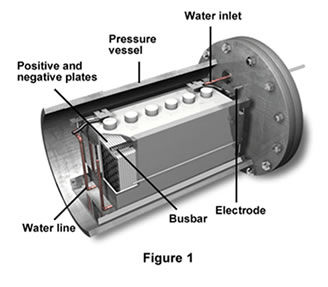|
Teacher Lesson Pages
The mark of a good solution for engineers is to find the correct balance between needs and available technology. In their
search for the perfect battery, engineers are looking for a way to deliver large amounts of electricity for long periods
of time in a small package. In this never-ending quest, engineers have experimented with lead, carbon, nickel, and a variety
of other elements.
A battery, by definition, depends upon a reaction between different types of chemical elements to create a flow of free
electrons. When the battery is connected to a device in a circuit, the electric current flows through the circuit, providing
electrical power to the device. A simple AA, AAA, C, or D-cell battery provides 1.5 volts of electrical current. In each case,
the electricity is created by chemical reactions taking place inside the battery.
For many years lead has been used as a metal in batteries. However, lead is a very heavy material, and a large lead battery
would be too heavy to lift into space. Recently, scientists have developed batteries using nickel (Ni). These batteries provide
greater electrical output than the traditional lead-based materials. They are also lighter, provide more electricity, last
longer, and can be recharged by electricity from the space station solar panels.
 The space station is now equipped with nickel-hydrogen batteries. The batteries on the space station must be strong enough to
supply continuous power to the station while the solar arrays are in Earthís shadow.
The space station is now equipped with nickel-hydrogen batteries. The batteries on the space station must be strong enough to
supply continuous power to the station while the solar arrays are in Earthís shadow.
The illustration above shows a nickel-hydrogen battery that can produce six volts of electricity. This battery is used on
Earth. A different model had to be designed for the weightlessness of space.
Charging and Recharging
The space station orbits Earth once every 90-95 minutes. About two-thirds of the station's orbit is in direct sunlight.
The one-third in Earth's shadow is called the eclipse period. When the space station is receiving direct sunlight, the solar
panels power the equipment and recharge the batteries. While the station is in eclipse, the batteries take over the job of
supplying the stationís electrical power.
Using careful calculations, the scientists and engineers who designed the space station figured out how many nickel-hydrogen
batteries had to be linked together to meet the station's electrical needs and still have enough electricity in case anything
should go wrong. They decided that only 35 percent of all the batteries' stored energy should be used up during the eclipse period.
This leaves 65 percent of the batteries' electrical power for emergencies. Remember, during the period when the station is in
sunlight, the solar panels take over again, providing the electricity for the equipment in the space station and recharging the
batteries.
Check for Understanding
Answer the following questions to see how much you know about rechareable batteries.
- How does a battery produce power
A chemical reaction in the battery creates a flow of free electrons. When the battery is connected to a device built
within a circuit, the electric current flows through the wire to power the device.
- Why is lead a bad choice for a battery to be used in space?
Lead batteries are too heavy to lift into space.
- What type of battery is on the space station?
The nickel-hydrogen batteries on the space station provide greater electrical output, are lighter, last longer,
and can be recharged by the space station solar panels.
- What effect does the space station orbit around Earth have on the stationís power supply?
The space station orbits Earth every 90-95 minutes. Two-thirds of the orbit is in direct sunlight and one-third is
spent in Earthís shadow. When the space station receives direct sunlight, the solar panels power the equipment and
systems on board and recharge the batteries. When the station is in Earthís shadow, batteries supply the stationís
power.
|


